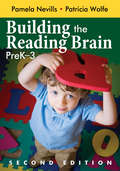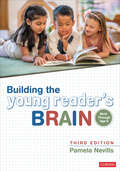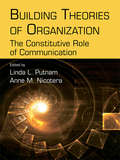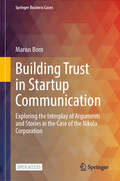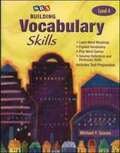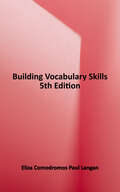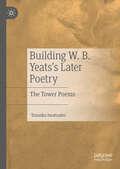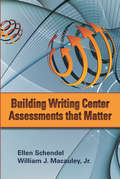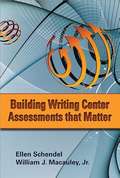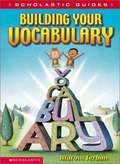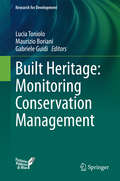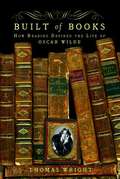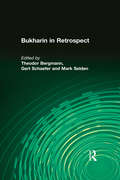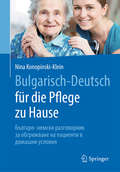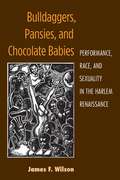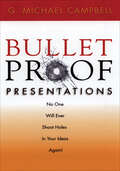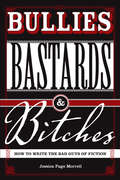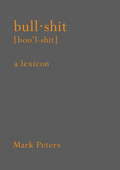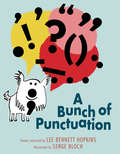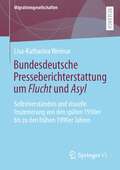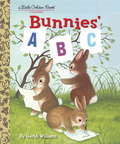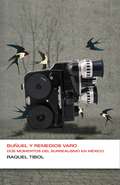- Table View
- List View
Building the Reading Brain, PreK-3
by Pamela A. Nevills Patricia A. WolfeDiscover how children’s brains change as they develop early reading skills! Moving through skills acquisition from birth to age eight, this updated edition of the best-selling book gives educators a clear picture of how children acquire and develop language skills in preparation for reading. This updated edition features developmentally appropriate practices for fostering critical literacy skills in each age group and expanded information on English learners and Response to Intervention. The authors provide: Brain-friendly strategies that build phonemic awareness, phonics, vocabulary, comprehension, and fluency skills Instructional applications for games, music, and play Interventions for children with early reading difficulties
Building the Young Reader′s Brain, Birth Through Age 8
by Pamela A. NevillsA practical guide to teaching the way a child’s brain learns best In this update of a bestselling classic, you will learn how to develop children’s capacity and will to read. Each sequential chapter is practical, eye-opening, and exactly what you need to engage young learners, plan lessons, partner with parents, and align your PreK-3 classrooms to the science of learning and the science of reading. Gain the latest insights on: Brain development from birth to age eight, plus the skills to nourish it, age by age and grade by grade What the latest neuroscientific research now says about oral language acquisition The evidence base for practices such as read alouds, inventive spelling, and sustained silent reading Why vocabulary building must happen concurrently with phonological processing, decoding, fluency, spelling, and writing How to artfully combine explicit teaching of skills with playful, multi-sensory routines every day All aspects of memory are needed to develop successful readers. When we engage children’s brains and build our teaching practices around what we know about how the human brain makes meaning, literacy learning makes more sense for children… and for us.
Building the Young Reader′s Brain, Birth Through Age 8
by Pamela A. NevillsA practical guide to teaching the way a child’s brain learns best In this update of a bestselling classic, you will learn how to develop children’s capacity and will to read. Each sequential chapter is practical, eye-opening, and exactly what you need to engage young learners, plan lessons, partner with parents, and align your PreK-3 classrooms to the science of learning and the science of reading. Gain the latest insights on: Brain development from birth to age eight, plus the skills to nourish it, age by age and grade by grade What the latest neuroscientific research now says about oral language acquisition The evidence base for practices such as read alouds, inventive spelling, and sustained silent reading Why vocabulary building must happen concurrently with phonological processing, decoding, fluency, spelling, and writing How to artfully combine explicit teaching of skills with playful, multi-sensory routines every day All aspects of memory are needed to develop successful readers. When we engage children’s brains and build our teaching practices around what we know about how the human brain makes meaning, literacy learning makes more sense for children… and for us.
Building Theories of Organization: The Constitutive Role of Communication (Routledge Communication Series)
by Linda L. Putnam Anne M. NicoteraThis volume explores the concept of communication as it applies to organizational theory. Bringing together multiple voices, it focuses on communication’s role in the constitution of organization. Editors Linda L. Putnam and Anne Maydan Nicotera have assembled an all-star cast of contributors, each providing a distinctive voice and perspective. The contents of this volume compare and contrast approaches to the notion that communication constitutes organization. Chapters also examine the ways that those processes produce patterns that endure over time and that constitute the organization as a whole. This collection bridges different disciplines and serves a vital role in developing dimensions, characteristics, and relationships among concepts that address how communication constitutes organization. It will appeal to scholars and researchers working in organizational communication, organizational studies, management, sociology, social collectives, and organizational psychology and behavior.
Building Trust in Startup Communication: Exploring the Interplay of Arguments and Stories in the Case of the Nikola Corporation (Springer Business Cases)
by Marius BornThis open access book explores the intriguing narrative of Nikola Corporation's startup journey in this insightful case study, examining its rapid ascent and subsequent decline from both a narrative and argumentative perspective. Founded by Trevor Milton, Nikola initially garnered investor interest with promises of a cleaner, sustainable alternative to diesel trucks. However, the company's surge in valuation was short-lived, as accusations from a short seller triggered a trust crisis, exposing alleged deception and raising doubts about the company's technology claims. This case study particularly focuses on the nuances of startup communication, emphasizing the critical importance of effective and trustworthy strategic communication for emerging tech ventures. It provides an in-depth look at the methods and tools necessary for startups to navigate initial skepticism and data limitations without exposing themselves to potential crises. Key insights include crafting compelling startup stories while maintaining trustworthiness, meeting investor information needs in an argumentatively convincing structure, recognizing the risks of blind faith in charismatic founders, and implementing internal checks and balances to safeguard against deception. Nikola's story serves as a cautionary tale, offering valuable lessons for entrepreneurs, investors, and scholars alike. This comprehensive examination sheds light on the challenges faced by startups dependent on emerging technologies and ambitious promises, making it an indispensable addition to the reading list of entrepreneurs.
Building Vocabulary Skills: Student Edition Level 4
by Michael F. GravesHelps students learn key vocabulary skills through: themed, four-part lessons that include practice in word meanings, reference skills, word building, and word play; weekly word lists that include content-area words; and a complete glossary and tools and reference section.
Building Vocabulary Skills, Fifth Edition
by Eliza Comodromos Paul LanganThis book introduces 300 essential words and word parts that are needed for general reading comprehension in high school and college.
Building Vocabulary Skills (Third Edition)
by Sherrie L. Nist Carole MohrIntroduces 300 essential words and word parts that are needed for general reading comprehension in high school and college.
Building W. B. Yeats's Later Poetry: The Tower Poems
by Tomoko IwatsuboThis book explores Yeats’s later poetry through the metaphor of the poetic tower, where different kinds of ‘building’ – architectural, textual, political and symbolic – were closely interrelated. It chronologically examines Yeats’s tower poems, composed during a period of dramatic personal and national transformation, from 1915 to 1932. Within a year after the Easter Rising in Dublin, Yeats acquired a half-ruined Norman tower in County Galway, Ireland, which had enthralled him for the past two decades, and textually and architecturally constructed it into a focus of his life and work. Interweaving the account of the renovation of the actual building and the textual construction in the socio-historical contexts, the book reveals the evolution of Yeats’s multiplex tower as an organizing principle of his later poetry. Using the archive of correspondence and manuscript materials of relevant poems, including those which have thus far escaped close attention, the book offers close textual-genetic analyses and a diachronic view of Yeats’s tower poetry, which, with its foundations laid decades earlier, he built in the collections from The Wild Swans at Coole (1919) to The Winding Stair and Other Poems (1933). Highlighting the delicate exchange between poetry and biography as well as between the textual architecture and the actual one, identifying a turning point in the making of each tower-oriented poem and proposing some draft-dating revisions, this first book-length systematic study on the process of Yeats’s creation of the tower casts an unfamiliar light on a familiar yet underexplored landmark in modern poetry and makes his step-by-step construction work come alive.
Building Writing Center Assessments That Matter
by Ellen Schendel William J. MacauleyNo less than other divisions of the college or university, contemporary writing centers find themselves within a galaxy of competing questions and demands that relate to assessment—questions and demands that usually embed priorities from outside the purview of the writing center itself. Writing centers are used to certain kinds of assessment, both quantitative and qualitative, but are often unprepared to address larger institutional or societal issues. In Building Writing Center Assessments that Matter, Schendel and Macauley start from the kinds of assessment strengths already in place in writing centers, and they build a framework that can help writing centers satisfy local needs and put them in useful dialogue with the larger needs of their institutions, while staying rooted in writing assessment theory. The authors begin from the position that tutoring writers is already an assessment activity, and that good assessment practice (rooted in the work of Adler-Kassner, O'Neill, Moore, and Huot) already reflects the values of writing center theory and practice. They offer examples of assessments developed in local contexts, and of how assessment data built within those contexts can powerfully inform decisions and shape the futures of local writing centers. With additional contributions by Neal Lerner, Brian Huot and Nicole Caswell, and with a strong commitment to honoring on-site local needs, the volume does not advocate a one-size-fits-all answer. But, like the modeling often used in a writing consultation, examples here illustrate how important assessment principles have been applied in a range of local contexts. Ultimately, Building Writing Assessments that Matter describes a theory stance toward assessment for writing centers that honors the uniqueness of the writing center context, and examples of assessment in action that are concrete, manageable, portable, and adaptable.
Building Writing Center Assessments That Matter
by Ellen Schendel William J. MacauleyNo less than other divisions of the college or university, contemporary writing centers find themselves within a galaxy of competing questions and demands that relate to assessment--questions and demands that usually embed priorities from outside the purview of the writing center itself. Writing centers are used to certain kinds of assessment, both quantitative and qualitative, but are often unprepared to address larger institutional or societal issues. In Building Writing Center Assessments that Matter, Schendel and Macauley start from the kinds of assessment strengths already in place in writing centers, and they build a framework that can help writing centers satisfy local needs and put them in useful dialogue with the larger needs of their institutions, while staying rooted in writing assessment theory.The authors begin from the position that tutoring writers is already an assessment activity, and that good assessment practice (rooted in the work of Adler-Kassner, O'Neill, Moore, and Huot) already reflects the values of writing center theory and practice. They offer examples of assessments developed in local contexts, and of how assessment data built within those contexts can powerfully inform decisions and shape the futures of local writing centers. With additional contributions by Neal Lerner, Brian Huot and Nicole Caswell, and with a strong commitment to honoring on-site local needs, the volume does not advocate a one-size-fits-all answer. But, like the modeling often used in a writing consultation, examples here illustrate how important assessment principles have been applied in a range of local contexts. Ultimately, Building Writing Assessments that Matter describes a theory stance toward assessment for writing centers that honors the uniqueness of the writing center context, and examples of assessment in action that are concrete, manageable, portable, and adaptable.
Building Your Vocabulary (Scholastic Guides)
by Marvin Terban Eric BraceBUILDING YOUR VOCABULARY, the newest addition to the Scholastic Guide series, is an essential resource that provides children with skills they need in order to approach and learn new vocabulary words. <p><p> Using language arts standards from states around the nation as a guide, BUILDING YOUR VOCABULARY familiarizes kids with word origins, word parts, context clues, synonyms and antonyms, and other critical skills. Rather than a book of vocabulary lists to memorize, this title gives kids tools they can use throughout their lives. <p> Kids will discover that English is made up of words from many different languages. They'll also find out about eponyms--people and places that become words. <p> Next students will discover the meanings of common prefixes, suffixes, and roots so that they can approach new words more confidently. There are also sections on homonyms, word families, shades of meaning, dictionaries, and thesauruses. All in a fun and entertaining format.
Built Heritage: Monitoring Conservation Management (Research for Development)
by Lucia Toniolo Maurizio Boriani Gabriele GuidiThis book provides a comprehensive, up-to-date overview on the most pressing issues in the conservation and management of archaeological, architectural, and urban landscapes. Multidisciplinary research is presented on a wide range of built heritage sites, from archaeological ruins and historic centers through to twentieth century and industrial architectural heritage. The role of ICT and new technologies, including those used for digital archiving, surveying, modeling, and monitoring, is extensively discussed, in recognition of their importance for professionals working in the field. Detailed attention is also paid to materials and treatments employed in preventive conservation and management. With contributions from leading experts, including university researchers, professionals, and policy makers, the book will be invaluable for all who seek to understand, and solve, the challenges face d in the protection and enhancement of the built heritage.
Built of Books: How Reading Defined the Life of Oscar Wilde
by Thomas WrightAn entirely new kind of biography, Built of Book explores the mind and personality of Oscar Wilde through his taste in books. This intimate account of Oscar Wilde's life and writings is richer, livelier, and more personal than any book.
Bukharin in Retrospect
by Theodor Bergmann Moshe LewinThis volume is the product of an international conference held in the autumn of 1988, around the time Nikolai Bukharin was officially rehabilitated - a benchmark in the history of glasnost and the process of legitimating perestroika. Conference participants from 19 countries, including the USSR and China, took occasion to reconsider the record and legacy of Bukharin as revolutionary, economist and political theorist. They offer a many-sided but critical re-examination of Bolshevism's "internal alternative" to Stalin and Stalinism.
Bulgarisch-Deutsch für die Pflege zu Hause: Българо- немски разговорник за обгрижване на пациенти в домашни условия
by Nina Konopinski-KleinSprachführer für den PflegealltagDieses übersichtliche Wörterbuch ist ein unverzichtbarer Helfer im Gespräch. Begriffe und einfache Sätze aus dem Alltag werden in beiden Sprachen aufgeführt und erleichtern die Verständigung im Alltag. Einfache Dialoge zu Alltagsthemen wie z. B. Wohlbefinden, Krankheit, Arztbesuch, Haushalt, und Ernährung. Aber auch wichtige Fachbegriffe aus der Pflege werden erläutert. Zahlreiche Abbildungen unterstützen das Gespräch und hilfreiche Vokabellisten erleichtern das Lernen neuer Wörter.Empfehlenswert für bulgarische Pflegekräfte und Haushaltshilfen, die in Deutschland arbeiten; aber auch Senioren und Angehörige finden darin Hilfen zum Gespräch.
Bulldaggers, Pansies, and Chocolate Babies: Performance, Race, and Sexuality in the Harlem Renaissance
by James WilsonBulldaggers, Pansies, and Chocolate Babies shines the spotlight on historically neglected plays and performances that challenged early twentieth-century notions of the stratification of race, gender, class, and sexual orientation. On Broadway stages, in Harlem nightclubs and dance halls, and within private homes sponsoring rent parties, African American performers of the 1920s and early 1930s teased the limits of white middle-class morality. Blues-singing lesbians, popularly known as "bulldaggers," performed bawdy songs; cross-dressing men vied for the top prizes in lavish drag balls; and black and white women flaunted their sexuality in scandalous melodramas and musical revues. Race leaders, preachers, and theater critics spoke out against these performances that threatened to undermine social and political progress, but to no avail: mainstream audiences could not get enough of the riotous entertainment.<P> Many of the plays and performances explored here, central to the cultural debates of their time, had been previously overlooked by theater historians. Among the performances discussed are David Belasco's controversial production of Edward Sheldon and Charles MacArthur's Lulu Belle (1926), with its raucous, libidinous view of Harlem. The title character, as performed by a white woman in blackface, became a symbol of defiance for the gay subculture and was simultaneously held up as a symbol of supposedly immoral black women. African Americans Florence Mills and Ethel Waters, two of the most famous performers of the 1920s, countered the Lulu Belle stereotype in written statements and through parody, thereby reflecting the powerful effect this fictional character had on the popular imagination.<P> Bulldaggers, Pansies, and Chocolate Babies is based on historical archival research including readings of eyewitness accounts, newspaper reports, songs, and playscripts. Employing a cultural studies framework that incorporates queer and critical race theory, it argues against the widely held belief that the stereotypical forms of black, lesbian, and gay show business of the 1920s prohibited the emergence of distinctive new voices. Specialists in American studies, performance studies, African American studies, and gay and lesbian studies will find the book appealing, as will general readers interested in the vivid personalities and performances of the singers and actors introduced in the book.
Bulletproof Presentations
by G. Michael CampbellA step-by-step program that reveals how to speak with confidence in any situation—and advance your career.The ability to make a good presentation, whether it be to peers, bosses, customers, the general public, or the media, plays a major role in your career advancement. This book will give you what you need to speak effectively, with confidence, and in virtually any situation.This step-by-step program can turn even the shakiest speaker into a cool, confident presenter. It gives practical, easy-to-follow guidelines, coupled with the blueprints that will allow anyone apply the techniques immediately. It gives the key to controlling fears, details on how to outline and organize an effective presentation, ways to improve style and delivery, and perfect strategies to captivate any audience. Bulletproof Presentations can help you walk to that podium with confidence and make a presentation that will impress and inform—with the ability to handle even the most difficult questions that may come up.
Bullies Bastards & Bitches: How to Write the Bad Guys of Fiction
by Jessica Page MorrellMorrell is a developmental editor and writer based in Portland, Oregon; she teaches writing workshops throughout the Northwest and is the author of several books about the writing profession. After introductory discussions of primal fears, their place in culture and storytelling, and key considerations in writing complex, believable "bad guy" characters, Morrell explores a variety of character types and situations including unlikely protagonists, anti-heroes, dark heroes and bad boys, bullies and mischief makers, villains, sociopaths, heroes versus villains, dangerous women, monsters, creatures, lost souls, and bad guys for younger readers. Annotation ©2009 Book News, Inc. , Portland, OR (booknews. com)
Bullshit
by Mark PetersAn irreverent lexicon of the seemingly infinite ways we call bullshit, written by a McSweeney's columnist and etymologist, illustrated by a New Yorker-contributing cartoonist.What's the difference between "balderdash" and "drivel"? Where did "mumbo-jumbo" come from? How should you use "meadow mayonnaise"? What's "felgercarb" and which popular TV show coined it? There are hundreds of common and rare terms for bullshit in English, including borrowings from German, turn-of-the-century sailors, The Simpsons, and beyond. Bullshit is everywhere, but not all of it is created equal. Mark Peters's Bullshit: A Lexicon is the handy guide to identifying and calling BS in all of its many forms, from "bunk" and "claptrap" to "applesauce" and "gobbledygook." Packed with historical facts, pop culture tidbits, and definitions for each term, Bullshit is perfect for humor readers, language lovers, and anyone looking to describe life's everyday annoyances.
A Bunch of Punctuation
by Lee Bennett HopkinsSelected by noted anthologist Lee Bennett Hopkins, this collection of all-new poems is written from the points of view of personality-filled punctuation marks, and is a memorable introduction to grammar for kids (adults, too!)In this land of punctuation, the exclamation mark is a superhero who tells a story chock-full of bops and bams, the comma lets you pause to enjoy the weather, and the period is where you must come to a full stop--or else the Grammar Police will get you. With humor and imagination, A Bunch of Punctuation makes it easy to remember the jobs of the various punctuation marks. Award-winning poet and anthologist Lee Bennett Hopkins has compiled a unique collection of poems featuring brand-new works by well-known poets, accompanied by inventive artwork by illustrator Serge Bloch.
Bundesdeutsche Presseberichterstattung um Flucht und Asyl: Selbstverständnis und visuelle Inszenierung von den späten 1950er bis zu den frühen 1990er Jahren (Migrationsgesellschaften)
by Lisa-Katharina WeimarBilder in der Presseberichterstattung nehmen Einfluss auf die Deutungs- und Wahrnehmungsmuster von Migration. Dadurch sind sie, die Bilder, Teil von gesellschaftlichen Aushandlungsprozessen über Migration. Über Pressebilder versichern sich Gesellschaften ihrer aktuellen Verfasstheit, sodass sie als Teil von Selbstverständigungsprozessen verstanden werden müssen. Aus dieser Perspektive widmet sich die Untersuchung Bildmotiven, die im Zeitraum der späten 1950er bis frühen 1990er Jahre in der Presseberichterstattung über ‚Flucht‘ und ‚Asyl‘ veröffentlicht wurden und leistet so einen Beitrag zum Verständnis der Bundesrepublik als Migrationsgesellschaft in historischer Perspektive.
Bunnies' ABC (Little Golden Book)
by Garth Williams Golden BooksA beloved 1950s Little Golden Book about the alphabet is back in print! This classic Little Golden Book, by the illustrator of Charlotte's Web, is a go-to alphabet book for every child's library! Adorable bunnies scamper and play as they introduce an animal for each letter. From Alligator to Panda to Zebra, Garth Williams' expressive animals come to life for the littlest readers.
Bunny and the Monster (Fountas & Pinnell LLI Green #Level F, Lesson 65)
by Anna MccartFountas and Pinnell Leveled Literacy Intervention Green System -- 1st Grade
Buñuel y Remedios Varo: Dos momentos del surrealismo en México
by Varios autoresDos excepcionales entrevistas de Raquel Tibol a referentes internacionales del surrealismo que tuvo lugar en México: Remedios Varo y Luis Buñuel. La autora, una de las más importantes periodistas culturales que ha dado el país, da cátedra en estos textos sobre el arte de la conversación. Hace 61 años Raquel Tibol realizó una entrevista a Luis Buñuel como uno de sus primeros trabajos en nuestro país, publicada el 29 de noviembre de 1953 en México en la Cultura, suplemento del periódico Novedades. De acuerdo con el anecdotario, para hacerla lo abordó en los estudios cinematográficos donde filmaba La ilusión viaja en tranvía, y la conversación, -"cálida y sincera", se lee- tuvo lugar en la que fue la casa del cineasta en México. En definitiva, este libro recoge dos de las voces más claramente identificadas como parte del surrealismo, corriente artística de la Benjamin Péret dijo: "En nuestro tiempo se necesita un lenguaje nuevo y una manera de ver e interpretar al hombre y al mundo muy diferente de la que está en uso. ¿Cómo se podría dar una imagen o un trasunto de la vida actual, si no es por medio del surealismo? Guerras, revoluciones, angustia sin fin: los prodigios de la técnica empleados para aniquilar a los pueblos y desatar por todas partes el caos y la destrucción. Un enorme cambio se está produciendo. Una honda y enorme revolución camina hacia su meta en todos los continentes. El parto del futuro es siempre doloroso, pero nunca lo ha sido tanto como ahora. Un mundo se hunde envuelto en sus propias contradicciones."
